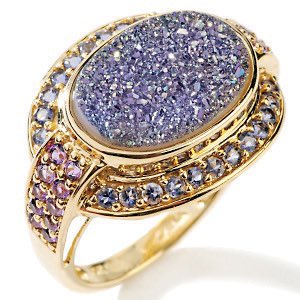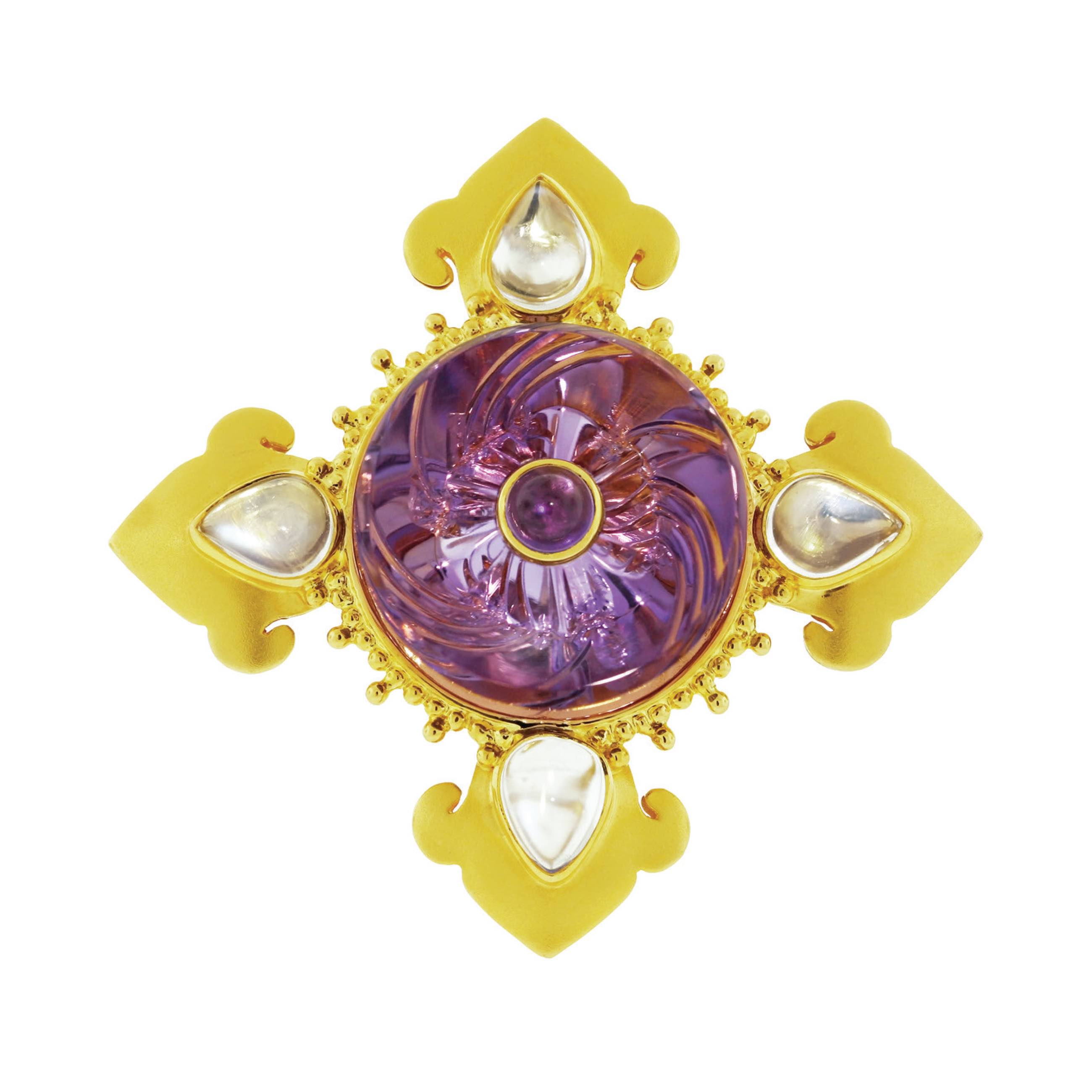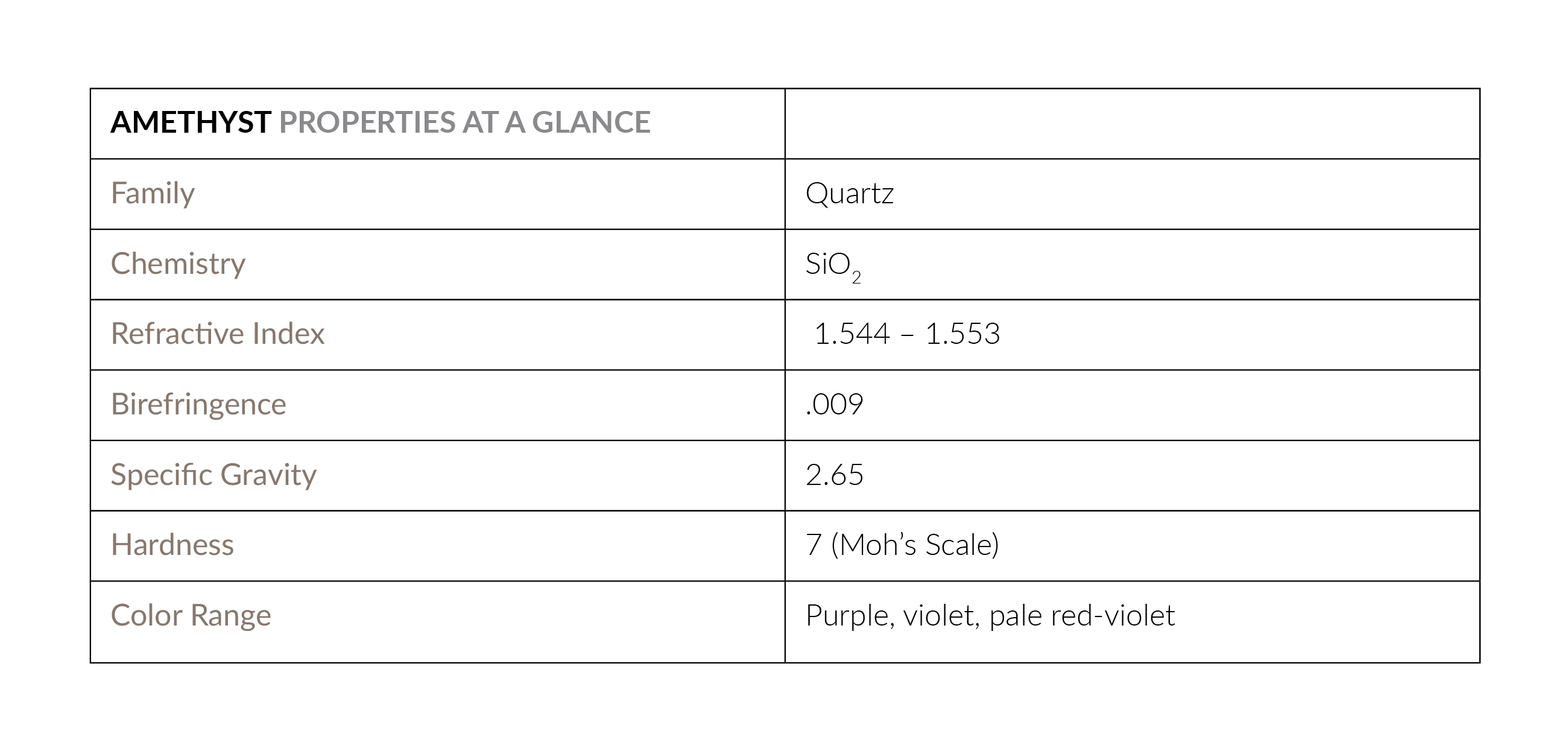
AMETHYST: February Birthstone

ROMANCE, HISTORY & LORE
Once associated with the tears of Bacchus, god of wine, amethyst has been prized for thousands of years. Since medieval times, Christian scholars have regarded this precious purple crystal as “the bishop’s stone” for its power to provide clarity and sobriety. Buddhist monks continue to fashion fine prayer beads from amethyst, as the stone was precious to Buddha.
ORIGINS
Amethyst is the rarest member of the quartz family, and deposits occur throughout the world.
One of the most significant producers of amethyst is Brazil, where several states possess large deposits. Neighboring Uruguay produces less amethyst, but many consider its clarity and rich, dark color to be superior to Brazilian amethyst.

Across the Atlantic, Zambia is also among the large global producers. Zambian amethyst is often small, but its dark color and clarity make it some of the finest in the world.
Amethyst occurs throughout the United States – Arizona, Texas, Pennsylvania, North Carolina, Maine and Colorado. The largest amethyst mine in North America is located in Thunder Bay, Ontario, Canada.

ENHANCEMENT
The great majority of amethyst available today has been heat treated to deepen its purple hues. This enhancement is permanent and will not fade over time.
Although natural amethyst is still readily available, it is also created synthetically. Largely as a bi-product of quartz synthesis for the electronic business, man-made amethyst is circulated in the marketplace. While synthetic amethyst can fool the untrained eye, a competent gemologist can easily discern man-made from natural.


SELECTING A STONE
Beyond being a beautiful and affordable addition to any jewelry collection, amethyst is well-suited for everyday wear. With a hardness of 7, amethyst is not prone to easy cracking or chipping, and can be worn with peace-of-mind.
Amethyst is always purple, but its color ranges from delicate, pale lilac to deep, expressive violet. While deeper purple amethyst is the most valuable, lighter gemstones may offer more affordable price points. Adding to amethyst’s allure is its sensitivity to lighting. Under evening or incandescent light, a stone will tend toward a deeper, darker purple. In daylight or fluorescent light, the same stone will adopt cooler grayish-blue tones.
Amethyst is often set in classic styles, and abundant enough that perfectly matched suites including earrings, pendants, rings, and bracelets are widely available. Since it can occur in large, near flawless crystals, gems of all sizes are possible. The finest pieces are often fashioned into exotic fantasy cuts, becoming the centerpiece of custom designs.


Heavily included amethyst with good color is often cut into cabochons or beads. While a cabochon does not produce a particularly brilliant affect, it is an effective way to showcase the stone’s color. Because of its abundance, lower quality amethyst is a popular gemstone for carving and beads, and are particularly popular in the metaphysical world.

CARE
Amethyst is very easy to care for, and typically demands little attention. To clean amethyst jewelry at home, let the piece soak in a solution of warm water and a gentle dish detergent then use a soft brush to clean the stone and around the setting. Amethyst should be cleaned often to avoid the buildup of cosmetics and dirt, which can affect the stone’s brilliance.

